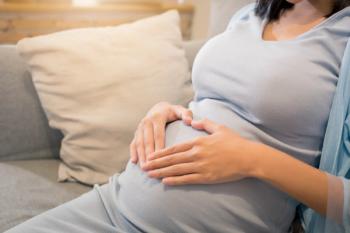
Study finds pregnancy may lower long COVID risk
New research suggests pregnant women are less likely to develop long COVID compared to nonpregnant women, offering insights for future treatment strategies.
Introduction
The risk of long COVID may be reduced by pregnancy, according to a recent study published in Nature Communications.1
Long COVID is defined as a condition lasting for months following COVID-19 infection. This new data fills a gap in understanding about the condition, with consistency of the findings providing confidence for the results.1
“We hope this new data will help clinicians develop better Long COVID prevention and treatment strategies for pregnant women and help those most at risk,” said Chengxi Zang, PhD, instructor at Weill Cornell Medicine.1
Study design and data sources
Two large electronic health record-based studies were assessed for real-world data, including the National Patient-Centered Clinical Research Network (PCORnet) and the National COVID Cohort Collaborative (N3C). Approximately 72,000 women with COVID-19 infection between March 2020 and June 2023 were included in the studies.1
Additional participants included approximately 208,000 controls matched based on age and demographics. These patients were also infected with COVID-19 but were not pregnant during this time.1
Criteria and definitions
Eligibility criteria included being aged 18 to 50 years and having at least 1 diagnosis code within 3 years to 7 days before the index date.2 Follow-up lasted for at least 180 days. Diagnosis codes linked to delivery outcomes or procedures were referenced to determine the delivery event.
Long COVID was defined based on International Classification of Diseases, Tenth Revision codes for 15 conditions among the PCORnet cohort. In the N3C cohort, a machine-learning algorithm was used to diagnose long COVID.2
Covariates included race and ethnicity, age at infection, national-level Area Deprivation Index, time of infection, health care utilization, smoking status, ventilation in acute infection, body mass index, COVID-19 vaccine status, and comorbidities. Follow-up lasted until 180 days, first target outcome, death, loss of follow-up, or June 30, 2023.2
Cohort size and patient characteristics
There were 492,325 PCORnet patients and 1,019,180 N3C patients with reported COVID-19 included in the analysis. Of these, 29,975 and 42,176, respectively, were pregnant at the time of infection. A median age of 30 years was reported in pregnant patients vs 35 years in nonpregnant patients.2
Pregnant patients also reported reduced odds of cancer, hypertension, chronic kidney disease, chronic pulmonary disorders, class 3 obesity, mental health disorders, and full vaccination at baseline. However, anemia, coagulopathy, and overweight were more common in this population.2
Risk of long COVID
Long COVID was reported in 16.47 per 100 persons in the pregnant group vs 18.88 per 100 persons in the nonpregnant group in the PCORnet cohort. This indicated a reduced risk of long COVID in pregnant patients, with a hazard ratio (HR) of 0.88 and a risk reduction of 2.41 events per 100 persons. This trend was observed across systems.2
In the N3C cohort, pregnant and nonpregnant patients had long COVID risks of 4.37 vs 6.21 events per 1000 persons, respectively. This showed a similar trend to the PCORnet cohort, with an HR of 0.70 and a risk reduction of 1.84 events per 100 persons.2
Additional risk factors and conclusion
The risk of long COVID was further increased among Black patients vs White patients, those aged 35 years and older vs those aged under 35 years, and those infected during the first and second trimester vs the second trimester. Infection during the Delta or Omicron periods was also linked to an increased risk.2
These results indicated a reduced risk of long COVID in pregnant patients vs nonpregnant patients. This trend remained consistent across long COVID phenotype methods in both cohorts.2
“We hypothesize that the altered immune and inflammatory environment lasting about six weeks after giving birth might contribute to lowering the risk of Long COVID,” said Zang.1
Reference
- Pregnancy may reduce long COVID risk. Weill Cornell Medicine. April 1, 2025. Accessed April 8, 2025.
https://www.eurekalert.org/news-releases/1078926 - Zang C, Guth D, Bruno AM, et al. Long COVID after SARS-CoV-2 during pregnancy in the United States. Nature Communications. 2025;16. doi:10.1038/s41467-025-57849-9
Newsletter
Get the latest clinical updates, case studies, and expert commentary in obstetric and gynecologic care. Sign up now to stay informed.











